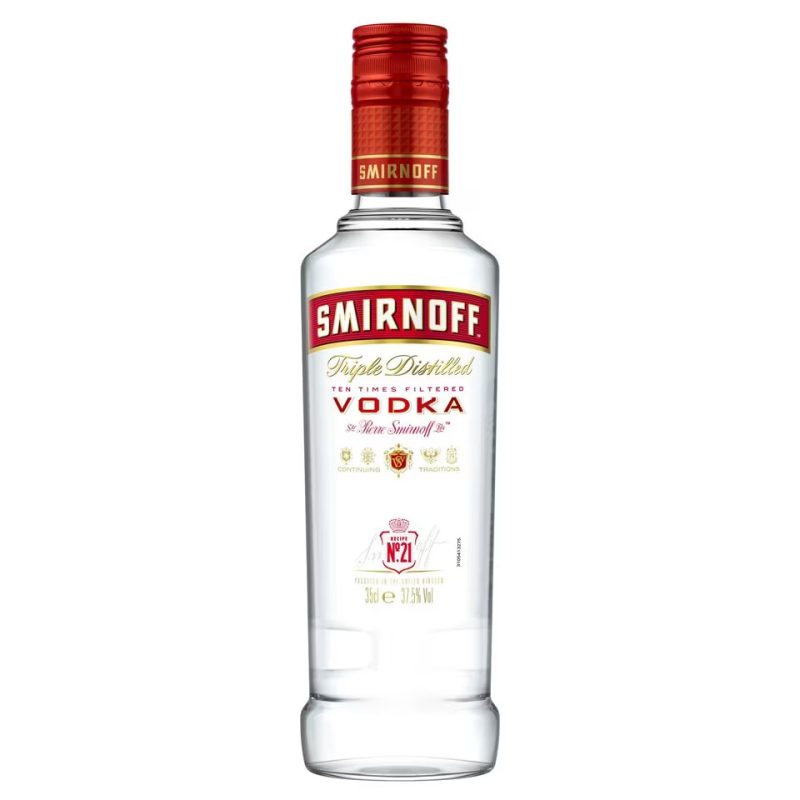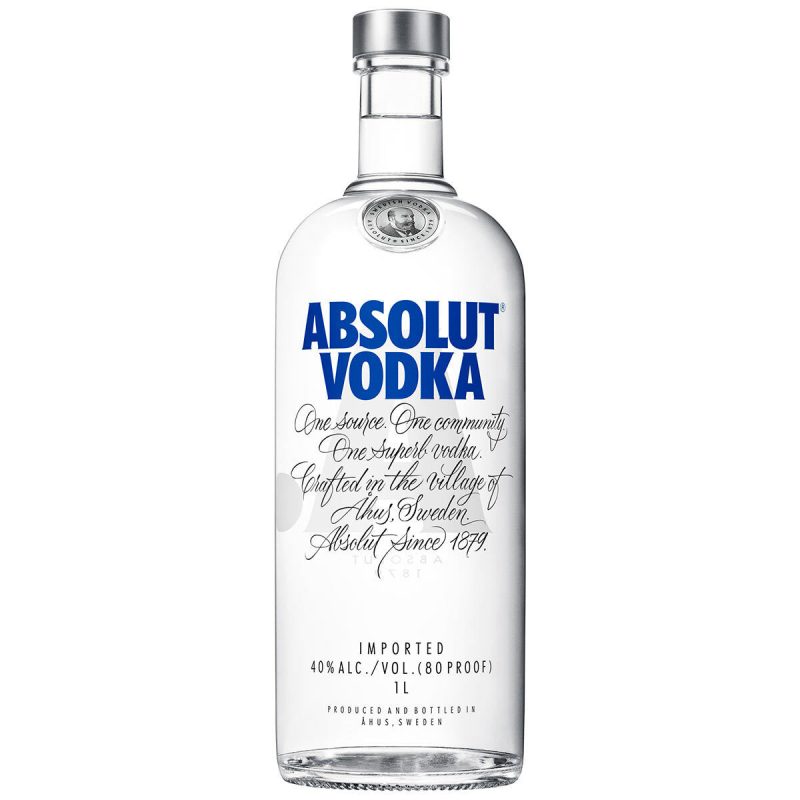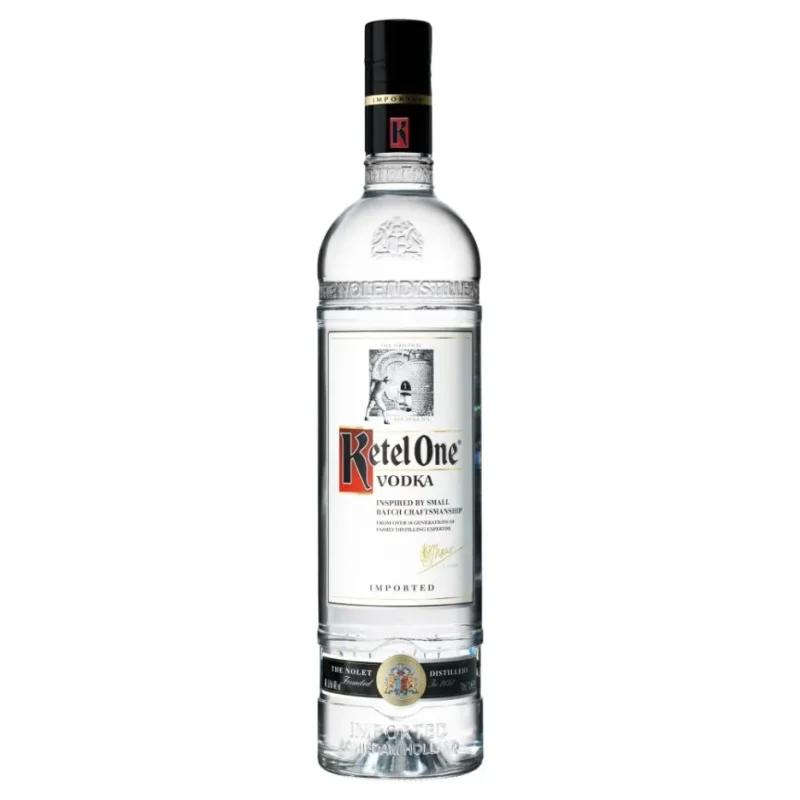Vodka is often hailed as the most versatile of all spirits and a staple in countless cocktails. For both casual drinkers and mixology enthusiasts, understanding the essence of vodka is crucial to fully appreciate the spirit and its many uses. In this comprehensive guide, we'll delve into vodka's origins, ingredients, production process, and the nuances that make each brand unique. Let's raise a glass to vodka and discover what makes it the ultimate libation!
Best Budget Vodkas Ranked
Origins of Vodka
The origins of vodka are steeped in history, with Russia and Poland both vying for the title of the spirit's birthplace. Vodka likely dates back to the 8th or 9th century, and by the 14th century, it was being crafted both for medicinal purposes and enjoyment. While vodka has remained popular in Eastern Europe, its status as a global phenomenon took hold in the 20th century when it began to feature prominently in iconic cocktails like the Martini and Bloody Mary.
The Key Ingredient: Water
At its core, vodka is a combination of water and ethanol. The water used in vodka production plays a significant role in determining the final product's quality and taste. Distilleries often source water from natural springs, wells, or even glaciers to ensure the purest, most refreshing spirit possible.
Base Ingredient Options
Though vodka is defined by its simplicity, the base ingredients used during production can vary widely. Common base ingredients include:
- Grain (such as wheat, rye, or corn)
- Potatoes
- Molasses
- Grapes
- Beets
- Rice
Using different base ingredients can impart diverse flavor profiles or texture to the vodka. For example, vodkas made with grains often have a smoother, creamier taste, while potato-based vodkas might have a slightly earthier finish.
Production Process: Fermentation and Distillation
The process of making vodka begins with the fermentation of the chosen base ingredient. This is achieved by adding yeast to convert the sugars into alcohol. Once fermentation is complete, the resulting liquid, known as the mash or wash, is ready for distillation.
Distillation is the process of separating alcohol from the rest of the mash. Vodka is typically distilled multiple times, each round refining the spirit and removing impurities. The number of distillations can have an impact on the vodka's flavor and smoothness. Some brands even tout their multiple-distilled vodkas as an indication of superior quality.
Filtering and Smoothing
After distillation, vodka undergoes a filtering process to remove any remaining impurities. Various methods, such as charcoal, quartz sand, and even precious metals, are used in filtering. While it may not significantly alter the taste, filtering can contribute to the vodka's texture, making it smoother and more enjoyable to drink.
Infusions and Flavored Vodkas
While traditional vodka is celebrated for its neutrality, infusions and flavored vodkas offer a more adventurous experience for the palate. Distilleries often use natural ingredients and essential oils to impart fruit, herb, or spice notes to their spirits.
What Is In Vodka Example:
Belvedere Vodka: A Rye-Based Example
Belvedere Vodka is a premium vodka brand crafted exclusively from Polish rye and artesian well water. It is distilled four times and filtered through charcoal, resulting in an exceptionally smooth and drinkable spirit. Belvedere exemplifies how the choice of a rye base, combined with meticulous filtration, can elevate vodka's quality and flavor profile.
Now that you've delved into the world of vodka and discovered the intricacies hidden within this seemingly simple spirit, it's time to explore further. Expand your vodka knowledge and appreciation by trying different brands, infusions, and cocktails. And don't forget to share this guide with your fellow vodka enthusiasts! Be sure to check out more enlightening articles and tastes right here on Vodka Doctors.
Frequently Asked Questions
What exactly is vodka made from?
Vodka is a distilled alcoholic beverage composed primarily of water and ethanol, but its base can come from any fermentable material. Most commonly, it is made from grains such as wheat, corn, or rye, but it can also be crafted from potatoes, grapes, and even beets.
Is vodka a clear liquor?
Yes, vodka is typically a clear, colorless liquor. This is because it is often distilled multiple times and then filtered, which removes impurities and any residual color from the base ingredients.
How strong is vodka compared to other spirits?
Vodka generally has an alcohol by volume (ABV) of around 35% to 50%. This is in line with many other spirits like whiskey, tequila, and rum. However, because vodka has a neutral flavor, it can be deceptively strong when mixed into cocktails.
How is vodka consumed?
Vodka can be consumed straight, often chilled or over ice, or used as a base in a wide variety of cocktails. Its neutral taste makes it highly versatile for mixing with other flavors ranging from simple sodas to complex cocktail ingredients.
What is the origin of vodka?
Vodka has its origins in Eastern Europe, with both Russia and Poland claiming to have created it. It's believed to have been initially produced around the 9th century.
How is vodka made?
Vodka production typically involves a process of fermentation, distillation, and filtration. Fermentable materials like grain or potatoes are first converted into alcohol using yeast. After fermentation, the liquid is distilled to increase the alcohol content, and finally, it is filtered, often through charcoal, to purify and refine the taste.
What does "distilled vodka" mean?
"Distilled vodka" refers to the fact that the beverage has undergone a distillation process, often multiple times. Distillation is used to increase the alcohol content and to remove impurities that might impact the flavor and clarity of the vodka.
Why is vodka distilled multiple times?
Distilling vodka multiple times increases its purity by removing more unwanted substances and impurities with each round. This also can result in a smoother taste. Some premium vodkas boast of being distilled over six times or more.
Can people with gluten sensitivities drink vodka?
Although many vodkas are made from gluten-containing grains, the distillation process typically removes gluten proteins. However, people with severe gluten sensitivities or celiac disease might opt for vodkas made from potatoes, grapes, or corn to avoid any risk.
Does the base ingredient affect the taste of vodka?
While most vodka aims to be flavorless and odorless, the base ingredient can impart subtle differences. For example, potato-based vodkas are often described as creamier, while those made from grapes might have a slightly sweeter profile.
What are some popular vodka cocktails?
Some of the most popular vodka cocktails include the Bloody Mary, Moscow Mule, Cosmopolitan, Martini, and White Russian. Vodka's neutral taste makes it a staple for a vast array of drink recipes.
How should I store vodka?
Vodka should be stored in a cool, dark place such as a cabinet or a liquor shelf. It does not need to be refrigerated, but chilling it can enhance its smoothness, particularly when served neat or in shots.
How long does vodka last?
When stored properly, vodka is virtually shelf-stable and can last indefinitely. The high alcohol content preserves the liquor and prevents spoilage. However, once opened, it's best to consume it within a few years to enjoy its optimal quality.
Is vodka calorie-dense?
Vodka contains roughly 97 calories per 1.5 ounces (which is one shot), making it one of the lower-calorie alcoholic drinks. However, calories can add up when mixed with sugary beverages or creamy liqueurs.
Can vodka be considered a 'pure' alcohol?
In the context of distillation and filtration, vodka is often considered one of the purest forms of alcohol due to its high ethanol content and the lack of additional flavors or colors. However, "pure" alcohol generally refers to ethyl alcohol or ethanol without any impurities.
Is it true that vodka is odorless and flavorless?
Vodka is renowned for its neutral flavor and lack of distinct aroma, but it's not entirely odorless and flavorless. Connoisseurs and those with a sensitive palate may detect subtle notes depending on the ingredients and distillation process.
What is the difference between cheap and expensive vodka?
The price difference often reflects the quality of ingredients, the number of distillations, filtration methods, and the brand's prestige. Expensive vodkas tend to have a smoother taste with fewer impurities and may be distilled from high-quality ingredients or use unique filtration processes.
Are there any health benefits to drinking vodka?
While moderate alcohol consumption can be a part of a balanced lifestyle, vodka should not be considered a health drink. Any potential health benefits are outweighed by the risks associated with excess alcohol consumption.
Does vodka need to be aged like whiskey or wine?
No, vodka does not require aging. It's ready for consumption immediately after distillation and filtration. Unlike whiskey or wine, vodka's desired characteristics do not develop with age.
What is "flavored vodka"?
Flavored vodka is vodka that has had flavors added to it after the distillation process. Common flavors include citrus, berry, vanilla, and pepper. These infused vodkas can add an extra dimension to cocktails without the need for additional liqueurs or flavoring agents.
Can vodka expire or go bad?
Thanks to its high alcohol content, vodka does not spoil as food does. However, if not stored properly — for instance, if the bottle is left open or exposed to sunlight — vodka can lose its flavor and potency over time.
Is vodka ever used for medicinal purposes?
Historically, vodka was used as a treatment for various ailments and as an antiseptic. Today, while not considered a legitimate medicine, it's sometimes used in home remedies for things like disinfecting or soothing toothaches.
What should I look for when choosing a vodka?
When selecting a vodka, consider the smoothness, which often comes from multiple distillations and filtration. Factor in whether you prefer traditional or flavored vodka and consider reputable brands. Personal taste preference and intended use (sipping neat vs. mixing in cocktails) should also guide your choice.
















